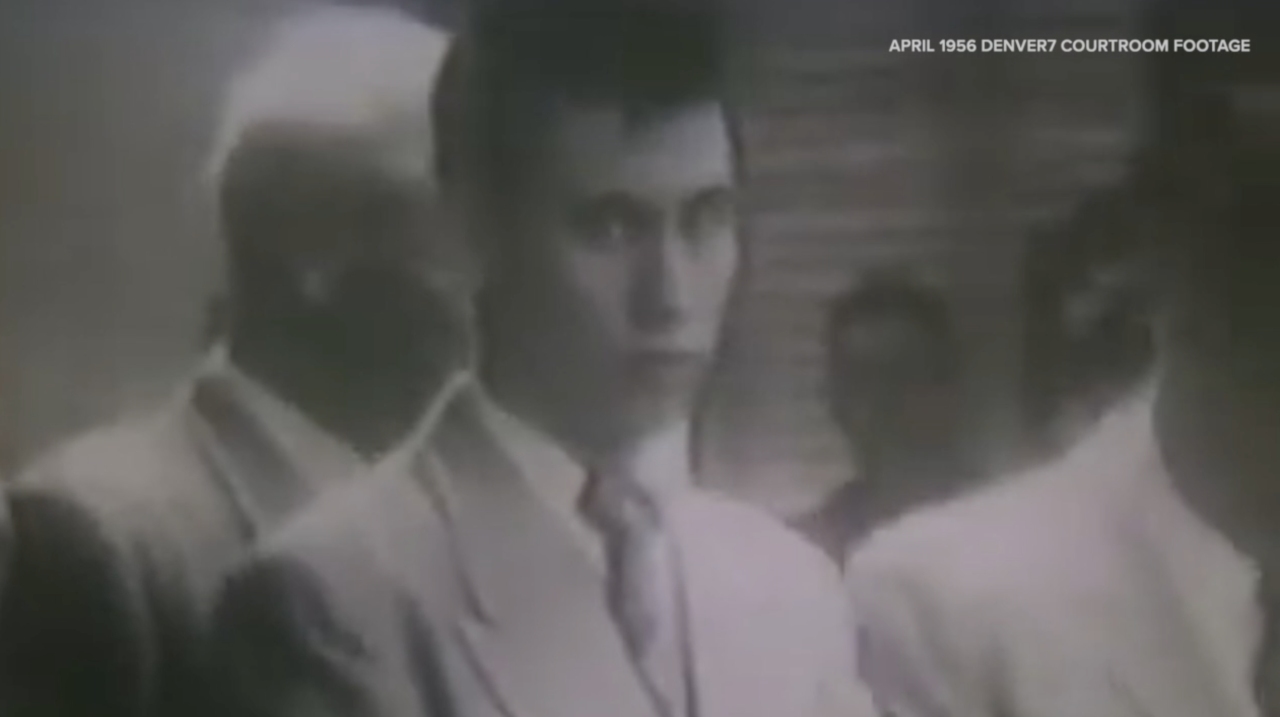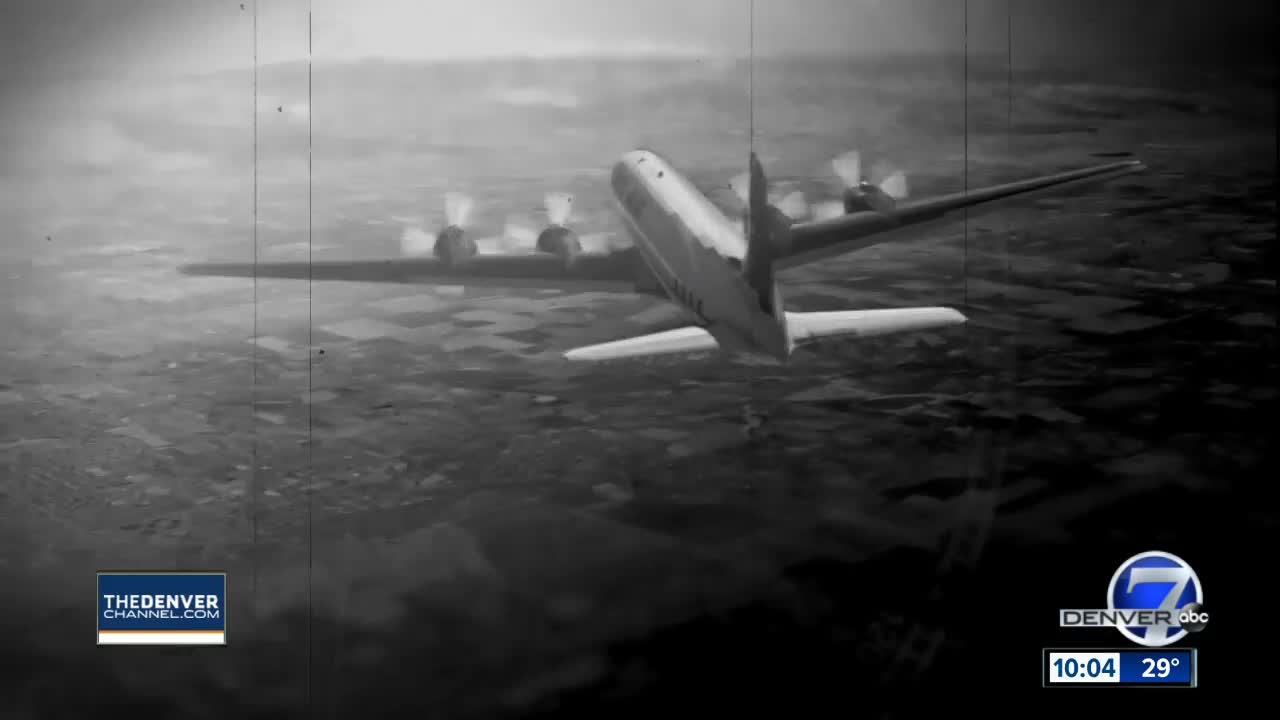LONGMONT, Colo. — Exactly 70 years ago Wednesday, Denver7 came to life on black and white television sets hitting the airwaves as KLZ-TV on November 1, 1953.
The station, which would eventually become KMGH, known today as Denver7, was then a CBS television affiliate keeping the same call letters as its sister radio station, KLZ, which just happened to be Denver’s first radio station.
Back then, there were no manuals on how to do broadcast journalism. Every day’s news coverage was a first.
Just two years after we first hit the airwaves, one of the biggest stories ever to hit the state would make a tragic mark on Colorado, the golden age of television and aviation.
And through fighting for the public’s right to know critical information, Denver7 forever changed the way journalism covers court cases in Colorado.
- 70 years of Denver7 | Historic photos, videos from our archives
It was November 1st 1955, just after 7 p.m. when Stapleton Airport controllers noticed a bright flash in the northern Colorado sky. At the same time, Conrad Hopp, a long time Longmont resident, who back then was just 18, sat down with his family for supper.
"And then we hear this loud explosion that shook all the windows in the house," Conrad recounted to Denver7 in 2019. "We looked outside, and we could hear the roar of the engines — that's how you knew it was a plane — and the ball of the fire coming through the air."
The voices of Stapleton controllers cracked across the radio checking on every plane over Denver’s airspace. One by one, the aircraft responded except for one.
Conrad jumped up from the table and ran to the outside of the family farm east of Longmont which was surrounded by sugar beet fields. He caught a glimpse of what was left of the wreckage, still burning behind outbuildings on the farm.
Back at Stapleton it quickly became apparent which plane had been lost. United Airlines Flight 629, a DC-6B bound for Portland had taken off from Denver’s airport at 6:52 p.m.
Just eleven minutes into its flight, the state-of-the art airliner exploded around 6,000 feet above the ground, raining down burning wreckage across six-square miles around Longmont.

As Hopp sped the family’s 1954 Chevy across rows of alfalfa eventually catching sight of one of United 629’s seats with a body still strapped in by a seatbelt. It was a harrowing experience he has shared all these year with his wife, Martha, who also was one of the first people to survey the carnage.
“When we got on the road, there was already debris on the road. So we drove the truck around each body so it could be found,” Martha shared with Denver7 in 2022.
“We’d drive around and then signal once we went around so someone could stay by the body and then we’d look for another one,” Conrad added.
That cold horrific November night became known as the deadliest act of mass murder in Colorado statehood history, killing all 44 people on board – a five-person crew and 39 passengers, including a 13-month-old boy.
That chilling reality came to light as the FBI uncovered the crash of United Flight 629 was no accident but in fact was the culmination of John "Jack" Gilbert Graham’s anger toward his mother, Daisie E. King.

On that night, Graham, 23, packed 25 sticks of dynamite into his mom’s suitcase, murdering her and the dozens of others on board the plane.
Graham, who long had a fraught relationship with his mother, eventually admitted to blowing up Flight 629, saying he built the time bomb which included the sticks of dynamite and primer caps.
In another heartless twist, after setting the bomb’s timer for 90 minutes and slipping it into his mother’s suitcase, Graham then paid $1.50 for an insurance policy at a Stapleton Airport vending machine. The insurance policy was in the amount of $37,500 and listed his mother’s name as the insured and himself as the beneficiary.
The case quickly sped through the judicial system, eventually heading to trial in April of 1956, just five months after the bombing.
And because of the magnitude of the tragedy and the number of families who had lost loved ones, Denver7, known then as KLZ-TV fought through the bureaucracy arguing the trial should be televised and justice should be spotlighted in the public eye.

“KLZ had requested permission to broadcast and televise the trial. Permission was denied,” an early 1960’s station newsreel noted. “We hit the air with a series of sharp editorials. Got the Colorado Supreme Court to consider our case and won a revision of Canon 35 of the Judicial Code of thics.”
That decision meant Denver7 was instrumental in connecting families to Graham’s court proceedings and because of that fight, the trial was the first in Colorado history to be televised.
During the weeks-long proceedings, Graham’s defense argued his confession to the FBI was under duress, but his confession was allowed as evidence. Graham did not testify and on May 5, 1956 and after only 69 minutes of deliberation, the jury found Graham guilty recommending the death penalty,
After only one delay, Graham was executed on January 11, 1957 in the Colorado State Penitentiary’s gas chamber, just 14 months after the plane’s bombing.
While there is no marker memorializing the site of the tragedy, over the years, family members of United Flight 629 have visited the field around Longmont where their loved ones lost their lives.
In 2022, Marian Hobgood Poeppelmeyer made a poignant visit to the beet fields to see for the first time where her dad died. Of all of the survivors who lost a loved one, Marian’s journey is unique in that she lost a father she would never get the chance to know.
Marian said she was born prematurely because of the stress on her mother after her father, Marion Hobgood’s murder onboard the flight.
Marian, who visited Longmont to thank first responders and townspeople like Conrad and Martha Hopp who rushed into action to try and save victims, wrote a book about her family and her healing experience titled, “Finding My Father: Beyond Tragedy Through Trauma, and Into Freedom."
“I wrote the book so that people could perhaps find their own healing, their own hope and their own inspiration, that they too will make it,” she said.One of the main goals of the book was to champion what forgiveness can do to a hurting heart.

“It lifted a burden I was carrying all these years. It lifted the bitterness, the anger and the hatred,” Marian reflected on forgiving her dad’s murderer. “It totally changed me, it totally freed me from allowing my dad’s death to control me. I can freely share about it because it’s not holding me back.”
There are moments when Marian's mind and imagination drift to what a conversation would be like with her dad if he were able to walk into a room with her. “I think I would hug him and cry,” she tears up. “Letting him hold me, that would be it.”







